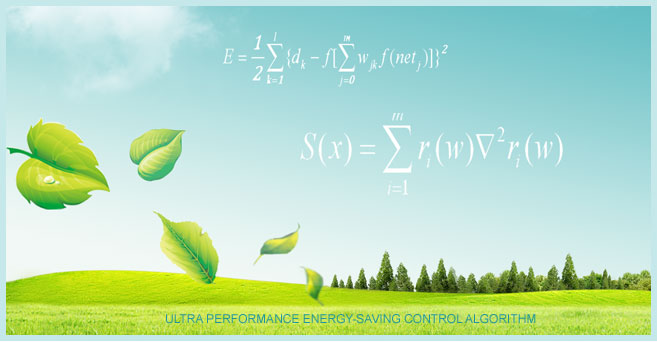ULTRA PERFORMANCE ENERGY-SAVING CONTROL ALGORITHM

For example, the lower temperature chilled water at low flowrate can be supplied to the load side, which causes more energy consumption by the chiller in contrast with less energy consumed by the chilled water pump. Alternatively, the chilled water at higher supply temperature and flow rate may be employed in order to produce the same capacity. Similarly, there are two ways for the chiller to produce the same cooling capacity as follows, the higher flow rate of the cooling water resulting in the decreasing chiller energy using due to the lower condenser pressure can be compared with the other way that employing lower flow rate to save the energy usage on the cooling water pump. Further, there are more control options if the chiller plant is composed of multiple chillers operating in parallel. In order to produce the same cooling capacity, the system can either operate more chillers simultaneously so that each unit works at low load, or run fewer chillers for each unit running at the nearly full load. The chillers, chilled water pumps, cooling water pumps, and cooling towers run independently in stead of the conventional dedicated manner.
The UPPC® system works on innovative and non-traditional control principles. First, UPPC® constructs performance model for all equipment of a chiller plant, including chillers, chilled water pumps, condenser water pumps, and cooling towers. Next, UPPC® uses a computer to perform combination calculations, obtaining the lowest total energy use of the chiller plant. Then, UPPC® finds the operating criteria required for each equipment group for the plant to operate on minimal energy through optimization. UPPC® implements proactive control over all plant components instead of the passive, compensatory control employed by traditional systems.
The UPPC® energy-efficiency control system is able to take full advantage of the high-efficiency area of chillers when operating at partial load (for centrifugal and screw-type chillers, the highest efficiency point is not at 100% load, but instead, at a partial load). According to the current and real-time system load requirements, UPPC® runs different combinations of units, ensuring that each chiller unit operates close to its optimal efficiency point. UPPC® simultaneously and proactively controls water pumps and cooling towers, optimizing the comprehensive efficiency of the system --- that is, the minimal total energy consumption by the chiller plant.
Specific UPPC® control strategies begin with the construction of independent mathematic energy-use model of each equipment group in the chiller plant based on the equipment characteristics. These individual models are then used to create more advanced mathematical models of energy-balance and energy-use of the whole chiller plant.
As the control system works, the computer takes periodic real-time cooling load measurements for input to these mathematical energy-use models, collectively solving for a working status that satisfy cooling load by the least total energy expenditure (i.e., the highest overall efficiency) of the entire chiller plant. Next, the control computer validates the setting value for each control variable, after that transmits them to corresponding PLCs to exert control over operation of each equipment unit, enabling the entire chiller plant to function at the highest efficiency. Mathematical models built in the optimization algorithm include: chiller energy-use model, condenser water pump energy-use model, the chilling water pump energy-use model, and the cooling tower performance model as well as the system hydraulic model.
